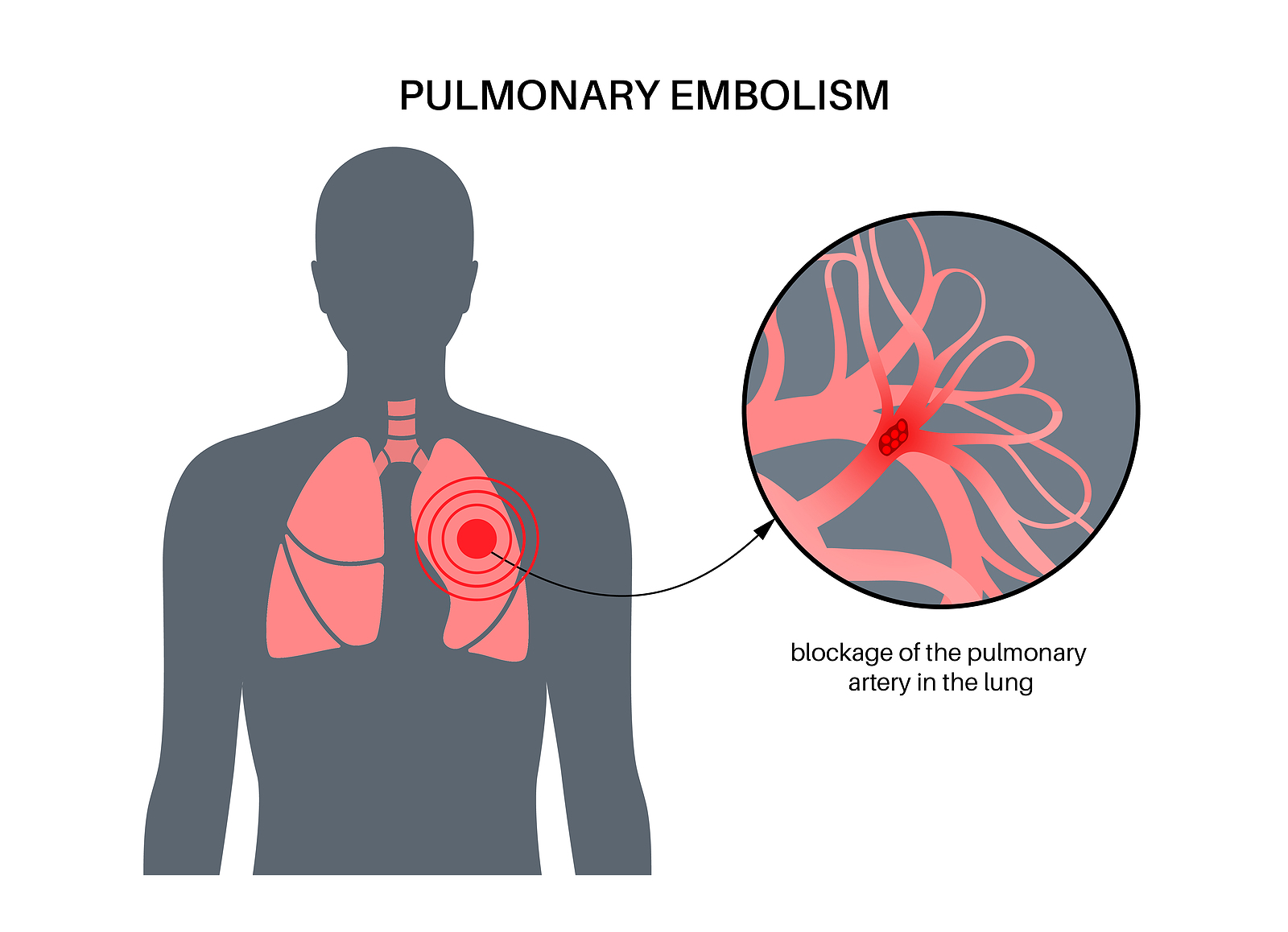
Pulmonary embolism is a serious yet treatable medical condition that occurs when a blood clot forms in the lungs’ blood vessels. It is essential to recognize the signs and symptoms of this condition, as timely diagnosis and treatment can significantly improve the prognosis. With appropriate medical care, individuals with a pulmonary embolism can go on to fully recover and lead healthy and fulfilling lives.
Symptoms of Pulmonary Embolism
The symptoms of pulmonary embolism can vary in severity and frequency, depending on factors such as the extent of the clot, the size, and the presence of underlying lung or heart conditions.
Shortness of breath, also known as dyspnea, is a common symptom of pulmonary embolism. It occurs when the lungs are not receiving enough oxygen, which can lead to difficulty breathing and a feeling of tightness in the chest. This symptom usually appears suddenly and can be severe, even at rest. It may also worsen with physical activity.
Chest pain is another common symptom of pulmonary embolism. The pain may feel sharp and be worse when taking deep breaths or coughing. It may also be accompanied by tightness or pressure in the chest. In some cases, the pain may be mistaken for a heart attack.
Syncope, or fainting, can also occur in people with pulmonary embolism. This can happen if the blood clot causes a sudden heart rate or blood pressure drop. Syncope can signify a severe medical condition, so it is crucial to seek immediate medical attention if you experience fainting.
Other symptoms of pulmonary embolism may include coughing up blood, rapid heartbeat, sweating, and feeling lightheaded or dizzy. If you experience any of these symptoms, it is vital to seek medical attention as soon as possible, as pulmonary embolism can be life-threatening. (Mayo)
Who is at Risk for Pulmonary Embolism?
Several factors can increase a person’s risk of developing a pulmonary embolism. These include:
- A history of blood clots or deep vein thrombosis (DVT)
- A family history of blood clots or DVT
- A sedentary lifestyle or prolonged periods of inactivity, such as after surgery or during a long plane flight
- Certain medical conditions, such as cancer, heart disease, or stroke
- Taking certain medications, such as birth control pills or hormone replacement therapy
- Pregnancy and the postpartum period
- Obesity
- Smoking
It is essential to be aware of these risk factors and take steps to reduce your risk of developing a pulmonary embolism. This may include maintaining an active lifestyle, taking measures to prevent DVT (such as moving your legs frequently during long flights or periods of inactivity), and managing any underlying medical conditions. (Cleveland Clinic)
Is Pulmonary Embolism a Medical Emergency?
Approximately 10-15% of individuals with pulmonary embolism may experience low blood pressure or shock, which occurs when the heart and lungs cannot provide sufficient oxygen to the body’s organs. This is considered a high-risk manifestation of the condition. While a pulmonary embolism can be a severe and potentially life-threatening condition, timely diagnosis and treatment can significantly improve the prognosis. The survival rate for individuals with a promptly diagnosed and treated pulmonary embolism is significantly higher than those with an undiagnosed and untreated condition. (Yale Medicine)
Preventing Pulmonary Embolism
Preventing blood clots in the deep veins of the legs is a crucial way to reduce the risk of pulmonary embolism. There are several steps you can take to reduce your risk of developing a pulmonary embolism:
- Maintain an active lifestyle: Regular exercise can help improve circulation and reduce the risk of blood clots.
- Take steps to prevent deep vein thrombosis (DVT): To reduce your risk of DVT, try to stay active, especially during long periods of inactivity, such as during a long plane flight or after surgery. You can also wear compression stockings or take medications to thin your blood as directed by your healthcare provider.
- Manage underlying medical conditions: If you have certain medical conditions, such as heart disease or cancer, it is essential to manage these conditions as directed by your healthcare provider.
- Avoid smoking: Smoking increases the risk of blood clots and pulmonary embolisms.
- Maintain a healthy weight: Being overweight or obese can increase your risk of developing a pulmonary embolism. (Cleveland Clinic)
It is essential to be aware of pulmonary embolism’s symptoms and risk factors and seek medical attention immediately if you are experiencing any signs or are at high risk for this condition. The prognosis for individuals with a pulmonary embolism can be very good with proper treatment.
Talk to your physician if you are having signs of PE. Pulmonary embolism requires immediate emergency medical care. If you suspect you or a loved one is having PE, call 911 or visit a nearby emergency room. Emergency providers can administer clot breaking medicine to avoid serious complications and even death.
Works Cited
Mayo Clinic. “Pulmonary Embolism.” Mayo Clinic, Mayo Foundation for Medical Education and Research, 1 Dec. 2022, www.mayoclinic.org/diseases-conditions/pulmonary-embolism/symptoms-causes/syc-20354647.
Cleveland Clinic. “Pulmonary Embolism (PE): Symptoms, Signs & Treatment.” Cleveland Clinic,
my.clevelandclinic.org/health/diseases/17400-pulmonary-embolism.
Yale Medicine. “Pulmonary Embolism.” Yale Medicine, Yale Medicine, 28 Oct. 2022,
www.yalemedicine.org/conditions/pulmonary-embolism.





